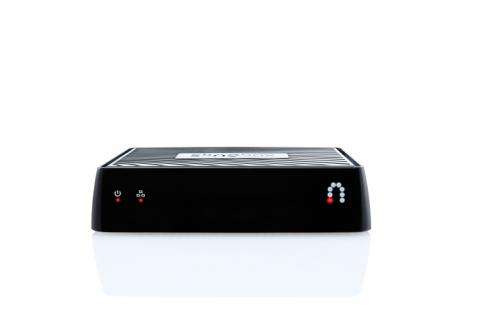Review: New Slingbox features nice price, new features, but is less necessary

Remember Sling, the company that pioneered place-shifting TV? Well, not only is it still around, but it just released a cheaper and more refined Slingbox.
Sling made its mark by giving consumers remote access to the live and recorded video they could get through their pay TV service. Sling users sitting in front of their office PC could watch a live baseball game streamed from their home TV. And those traveling could watch videos recorded on their DVRs on their mobile phones or tablets.
In recent years, Sling has touted the ability of its users to shift content from one TV in their home to another. For example, they can watch shows on the TV in their bedroom without needing to rent another cable box. Instead, they can use the Sling app on their mobile device to beam content from the living room to a low-cost Apple TV or Roku box attached to their bedroom TV.
With the M1, a cigar box-size device that attaches to a set-top box, Sling hopes to appeal to a broader audience by offering a less expensive, easier to use device. At $150, the M1 is the least-expensive Slingbox ever at launch. It's $30 cheaper than the model it's replacing, the Slingbox 350.
Unlike the 350, the M1 has a built-in Wi-Fi antenna, making it much easier to connect to the Internet than the older model. The 350 only offered an Ethernet connection, which proved troublesome for the many consumers who don't have an Ethernet port or whose Internet routers are not near their cable boxes.
Sling has also made the M1 easier to set up than past models. Before, users had to go through a Web browser on their computer to configure a Slingbox. With the M1, they can use the Sling smartphone or tablet apps instead. So you can get the M1 up and running without lugging your laptop into the living room or having to run back and forth to your desktop PC.
Those apps feature another new tweak for the M1. Slingbox users in the past were able to beam video sent from the device to their tablet or smartphone on to their TVs. But they typically couldn't do anything else with their mobile devices while streaming video from them. Now Sling has upgraded the apps to allow users to check their email, see what people are saying on Twitter or head over to IMDb on their smartphone or tablet without interrupting what's on their TV.
My wife and I don't have a TV in our bedroom, so we used our iPad instead to watch an episode of the "Colbert Report" streamed from our living room via the M1. The picture quality was great, and it was nice to be able to watch something in bed without having to buy another TV or rent another set-top box.
Similarly, I was able to watch on my iPhone part of an episode of "Agatha Christie's Poirot" I'd recorded while out walking around my neighborhood. The video quality was only so-so, but acceptable if that was the only way to tune in a sports game or other live event.
Unfortunately, the M1 has some of the same shortcomings as previous Slingbox models. There's often an annoying second or two delay between pressing a button in the Sling app and seeing a response from your DVR or set-top box. I experienced similar delays both when I was in the house accessing the Slingbox over my home Wi-Fi and when I was connecting with it over cellular networks on my smartphone. The delay is long enough that many users may be tempted to re-press a button to make sure the Slingbox got their message.
Another shortcoming is that the M1 hijacks the set-top box it's connected to. Users at home can only watch what's being sent to the person using the Sling app.
But the biggest shortcoming of M1 is that the problem it's trying to solve appears to disappearing. For years now, consumers have been able to effectively place-shift TV programming via online video services like Netflix, Hulu and Apple's iTunes. Those choices have only improved in recent years. Roku's box, for example, has some 1,000 channels offering a wide variety of Internet-based content.
More threatening for Sling, the pay TV companies' latest set-top boxes and apps offer many of the same features users get through a Slingbox. Dish Network, for example, has built Sling's technology into its Hopper DVR, but has done so in a way that allows users at home and away to watch different programs. And Comcast subscribers that have the company's new X1 DVR can watch all the live and recorded programs available through it on their smartphones or tablets while at home.
So while I'm happy to see Sling continue to improve its Slingbox lineup and love the new price, I'm not convinced the M1 is anything close to a must-have.
—-
What: Slingbox M1
Likes: Lower price; ability to configure using a smartphone or DVR; ability to check email or view Twitter while streaming something from Sling app to TV; ability to watch anything on TV in another room or away from home; high-quality streams.
Dislikes: Hijacks set-top box, preventing users at home from watching something different than what's viewed through Sling; awkward app interface; second or two lag in interacting with set-top box over Internet.
Price: $150
Web: sling.com
©2014 San Jose Mercury News (San Jose, Calif.)
Distributed by MCT Information Services




















